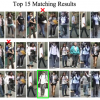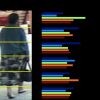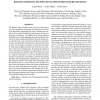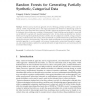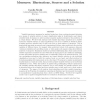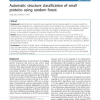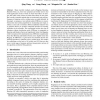Publication
Owing to visual ambiguities and disparities, person re-identification methods inevitably produce suboptimal rank-list, which still requires exhaustive human eyeballing to identify ...
Publication
Generating coherent synopsis for surveillance video stream remains a formidable challenge due to the ambiguity and uncertainty inherent to visual observations. In contrast to exist...
148
click to vote
Publication
State-of-the-art person re-identi
cation methods seek robust person matching through combining various feature types. Often, these features are implicitly assigned with a single ve...
ICIP
2010
IEEE
13 years 2 months ago
2010
IEEE
The Random forest classifier comes to be the working horse for visual recognition community. It predicts the class label of an input data by aggregating the votes of multiple tree...
TDP
2010
13 years 2 months ago
2010
Abstract. Several national statistical agencies are now releasing partially synthetic, public use microdata. These comprise the units in the original database with sensitive or ide...
BMCBI
2007
13 years 4 months ago
2007
Variable importance measures for random forests have been receiving increased attention as a means of variable selection in many classification tasks in bioinformatics and relate...
BMCBI
2006
13 years 4 months ago
2006
Background: Selection of relevant genes for sample classification is a common task in most gene expression studies, where researchers try to identify the smallest possible set of ...
BMCBI
2010
13 years 4 months ago
2010
Background: Random forest, an ensemble based supervised machine learning algorithm, is used to predict the SCOP structural classification for a target structure, based on the simi...
CATA
2009
13 years 5 months ago
2009
The nearest shrunken centroid classifier uses shrunken centroids as prototypes for each class and test samples are classified to belong to the class whose shrunken centroid is nea...
ECAI
2008
Springer
13 years 6 months ago
2008
Springer
Many ensemble methods, such as Bagging, Boosting, Random Forest, etc, have been proposed and widely used in real world applications. Some of them are better than others on noisefre...
